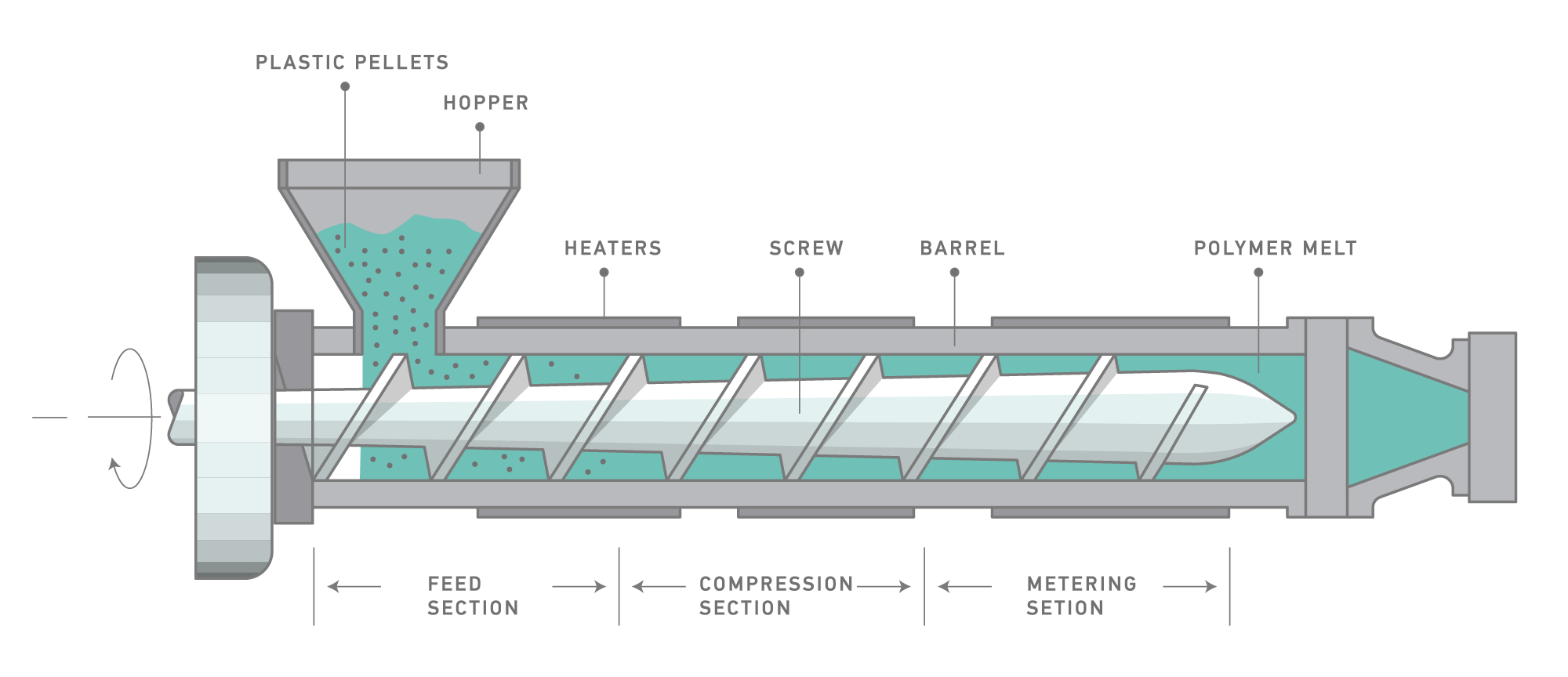The features and functions of an extruder production line can be explained in detail from several aspects:
Efficient Production
Continuous Production: The extruder production line is an automated, continuous production system that can operate without downtime, increasing output.
High Output: Depending on the design and specifications of the production line, it can quickly produce large quantities of standard products such as pipes, sheets, films, etc., significantly improving production efficiency.
Precise Control
Temperature Control: Multiple heating zones with temperature control systems allow precise regulation of the material temperature during extrusion, ensuring uniformity and proper flow in the molten state.
Pressure Control: The pressure inside the extruder system can be precisely controlled, preventing product quality instability or material waste.
Speed Control: Parameters like screw rotation speed and pulling speed can be adjusted to meet the production needs of different materials and product specifications.
Versatility
Adaptability to Different Materials: The system can process various thermoplastic materials such as PVC, PE, PP, PS, ABS, PA, etc., and adjust settings based on the material properties.
Wide Application: Suitable for producing a wide range of products, including but not limited to pipes, profiles, sheets, films, and cable coatings.
Flexible Adjustment: By adjusting molds, cooling systems, and pulling speeds, the line can produce different sizes and specifications of products, meeting the diverse needs of the market.
High Automation
Intelligent Operation: Modern extruder production lines are usually equipped with PLC control systems, touch screens, and human-machine interfaces, enabling automatic adjustments and real-time monitoring to reduce manual intervention.
Automated Detection and Feedback: Online detection devices (such as material temperature, product thickness, width, density, etc.) are installed, automatically providing feedback on production parameters to optimize the process and ensure product quality.
Uniform Material Mixing

Screw Design: The screw can be designed as a single screw or twin-screw, depending on the material characteristics, to ensure efficient material mixing and homogenization, maintaining consistent product quality.
Uniformity of Melted Materials: The shear and stirring actions within the screw help avoid air bubbles and unevenness in the melted material, improving the appearance and performance of the final product.
Energy Saving and Environmental Protection
Energy-Efficient Design: By optimizing the heating system, screw design, and cooling methods, the extruder production line can maximize energy savings while maintaining production efficiency.
Low Emissions: Modern production lines employ advanced exhaust treatment devices that effectively reduce harmful gas emissions, meeting environmental standards.
Resource Recycling: Some production lines support the recycling of materials, allowing waste to be reprocessed, improving raw material utilization and reducing waste during production.
Stability and Reliability
Robust Structure: Extruder production lines are typically made from high-strength alloy materials with corrosion and wear resistance, ensuring long-term, high-load operation.
High Reliability: Modern extruders are equipped with high-quality core components such as drive systems, gearboxes, and temperature control systems, minimizing the frequency of failures and enhancing production stability.
Long Service Life: With precise design and high-standard manufacturing, the equipment typically has a long service life, reducing downtime for maintenance.
Flexibility
Customizable Production: The production line can be customized according to the customer’s specific needs, such as changing the shape of molds, adding extra cooling systems, or adjusting pulling speeds to suit particular products.
Quick Mold Change and Adjustment: The line is designed to accommodate product diversity, allowing quick mold changes, parameter adjustments, and reduced changeover times, enhancing production flexibility.
Multi-Product Production: The line can quickly switch between different specifications or types of products, adapting to various market demands and showing strong market adaptability.
Highly Automated Quality Control
Online Monitoring Systems: Modern extruder production lines are typically equipped with sensors and online detection systems to monitor key parameters such as temperature, pressure, material flow rate, and product dimensions in real time, ensuring that each stage of production meets standards.
Automatic Adjustment: The system can automatically adjust production parameters such as temperature, pressure, and material supply speed based on monitoring results, ensuring consistent product quality.
Defect Detection and Alerts: If a quality issue arises during production (e.g., product defects, material blockages), the system can automatically alert and record the fault, allowing for prompt troubleshooting.
Through these features, the extruder production line not only achieves efficient and stable production but also offers flexible adjustments based on different needs, ensuring product quality and market competitiveness.
Learn more about extruder production lines
